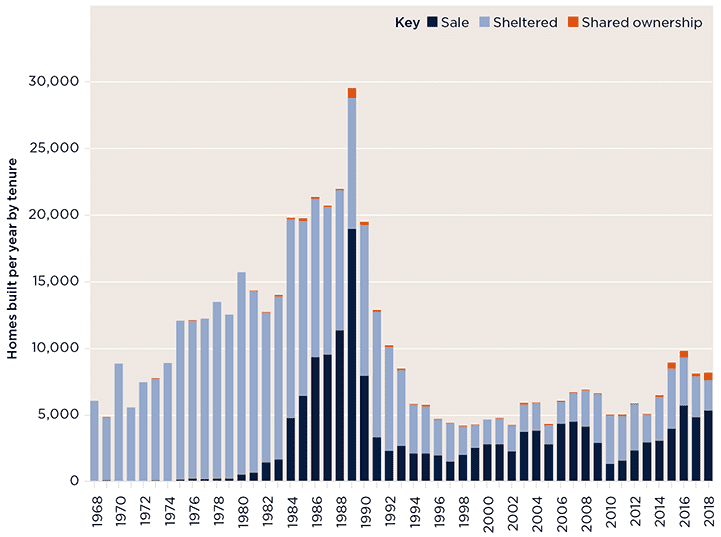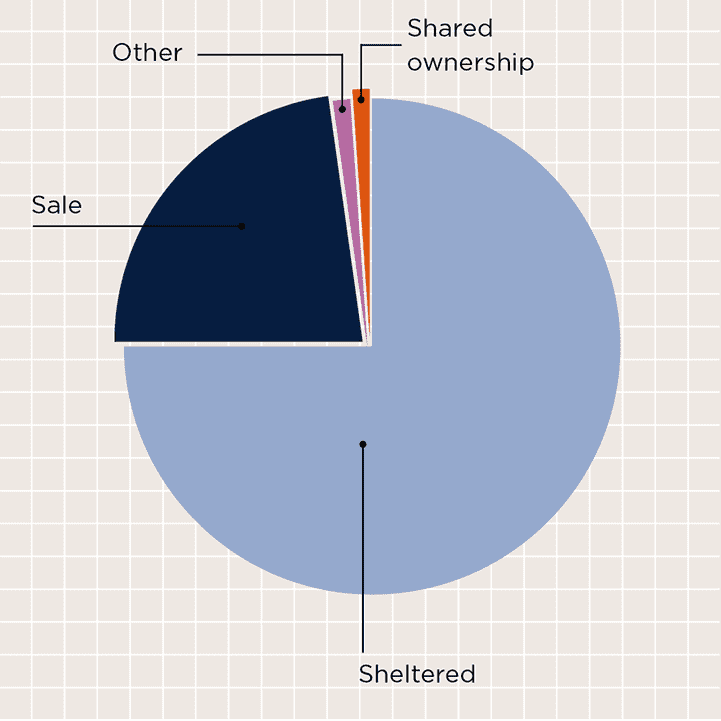State of the market
The retirement housing market has transformed multiple times over the past 50 years. So where are we now, and what are the emerging opportunities?
.png)
The retirement housing market has transformed multiple times over the past 50 years. So where are we now, and what are the emerging opportunities?
Across the UK there are 726,000 specialist homes for older people, according to data from the Elderly Accommodation Counsel (EAC). However, that total hides a huge amount of variation in age, quality, tenure, and location.
More than half that stock (52%) was built or last refurbished more than 30 years ago. So, not only do we need to develop more retirement homes to meet demand, there’s also a need to replace or refurbish dated and inefficient stock with future-proof homes that are built for modern needs.
52% of specialist homes for older people were built or last refurbished more than 30 years ago
Savills Research
The decline of new-home supply
Sheltered homes, operated by registered social landlords, make up three-quarters of retirement homes in the UK. Much of that stock was built in the 1970s and 80s, when government grants were more widely available.
Supply of new homes peaked in the late 1980s, supported by strong growth in home building for sale. The switching focus of grants to general needs housing in the 1990s led to supply falling dramatically, reaching a low of 4,142 homes built in 1998.

Type of housing built per year Comparing the tenures of retirement homes constructed over the past 50 years
Source: EAC
The last five years
While supply is now almost double the trough we saw in 1998, it remains far below the level of construction seen in earlier decades.
Over the past five years, more than half of retirement housing supply has been for leasehold sale, while 41% of supply has been through sheltered housing for social rent. Sheltered housing delivery in the past 10 years is just over a quarter of 1979-88 levels.
Shared ownership is growing, but still makes up a small proportion of supply. It accounts for less than 5% of homes built over the past decade, despite over 40% of shared ownership homes being built in this period.

Tenure split graph Comparing the current tenures across retirement homes
Source: EAC
Where is delivery strongest?
The South East has the highest supply of purpose-built retirement housing. This has been the case since the 1980s. Most delivery in the area over the past four decades has been for private sale, capitalising on the higher house prices older homeowners living in this area can tap into.
.png)
More recently, the West Midlands has seen rapid acceleration in its delivery of retirement housing. Compared with the previous decade, delivery has increased by 94%, making it the second-highest region for retirement housing delivery. Some of this growth has been down to the ExtraCare Charitable Trust, which alone has built some 1,430 units in the West Midlands since 2010.

.png)
Delivery of retirement housing Comparing delivery and change in delivery since 1999
Source: Savills Research using EAC
An evolving market
In some ways, the retirement housing market today isn’t so different from how it looked five years ago. McCarthy & Stone is still by far the largest private developer. However, in September 2018, the company announced it would rein in its delivery programme and switch focus from growth to driving up profitability.
Perhaps the greatest capacity for growth and disruption comes from looking at new operating models and tenures. Providers such as Birchgrove are proposing to offer privately rented retirement homes for those with less equity to hand, but enough income to pay for ongoing housing costs. At the top end of the market, central London developer Auriens will offer luxury rented homes, which removes the need for customers to pay stamp duty when they move in.
One way or another, the retirement-living sector must continue to innovate and respond to the market if it is to meet the needs of our ageing population.
3 other article(s) in this publication